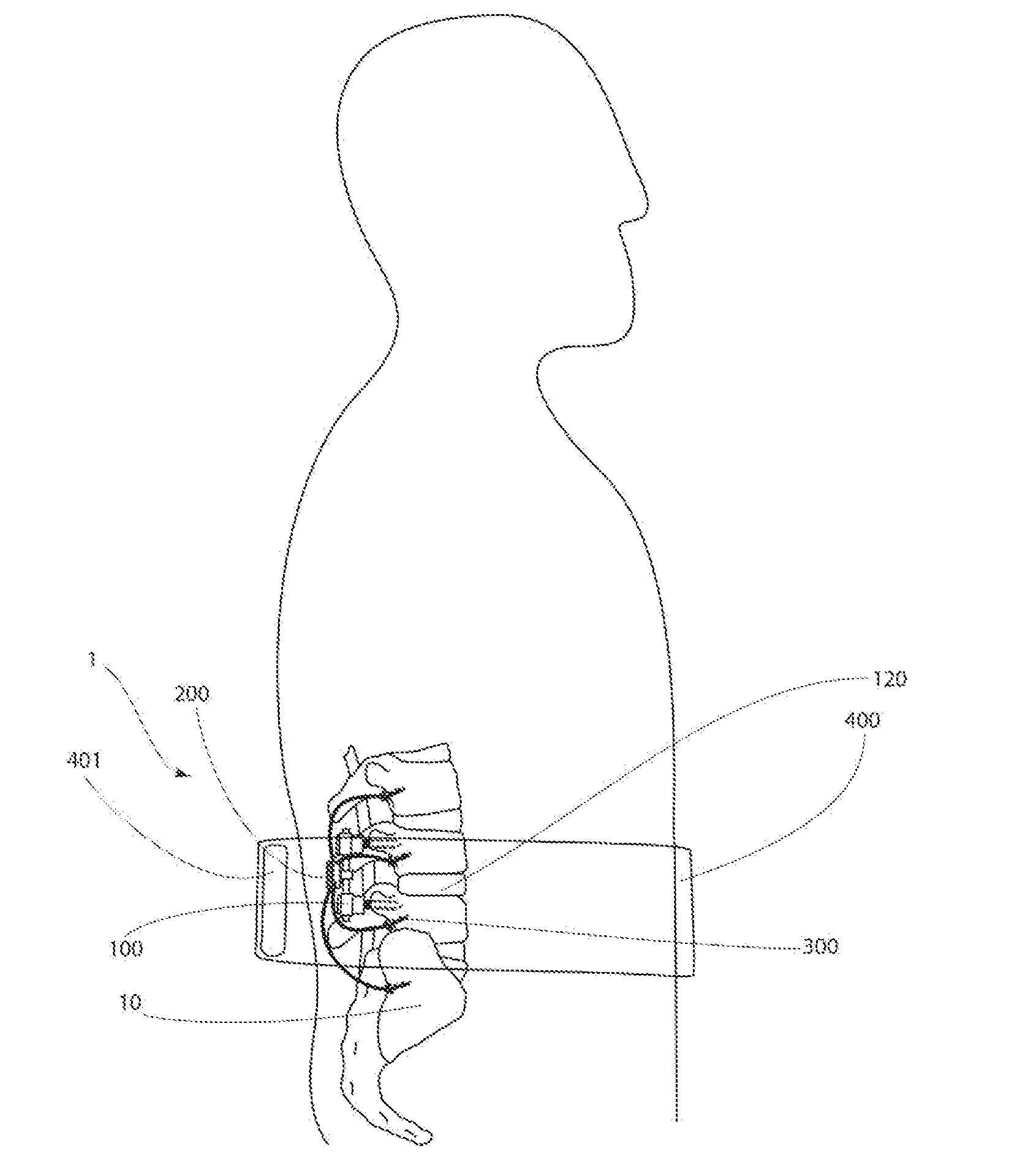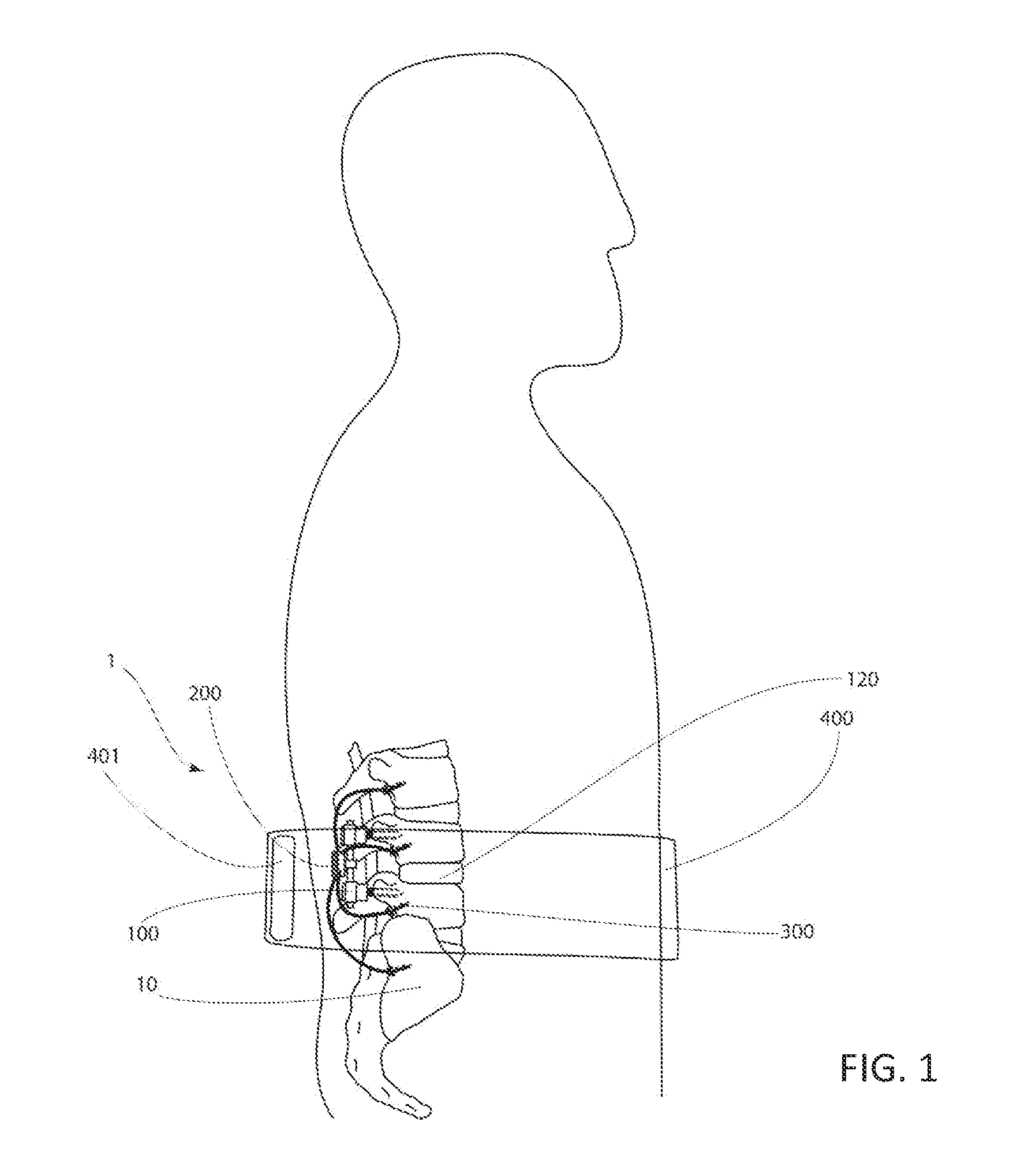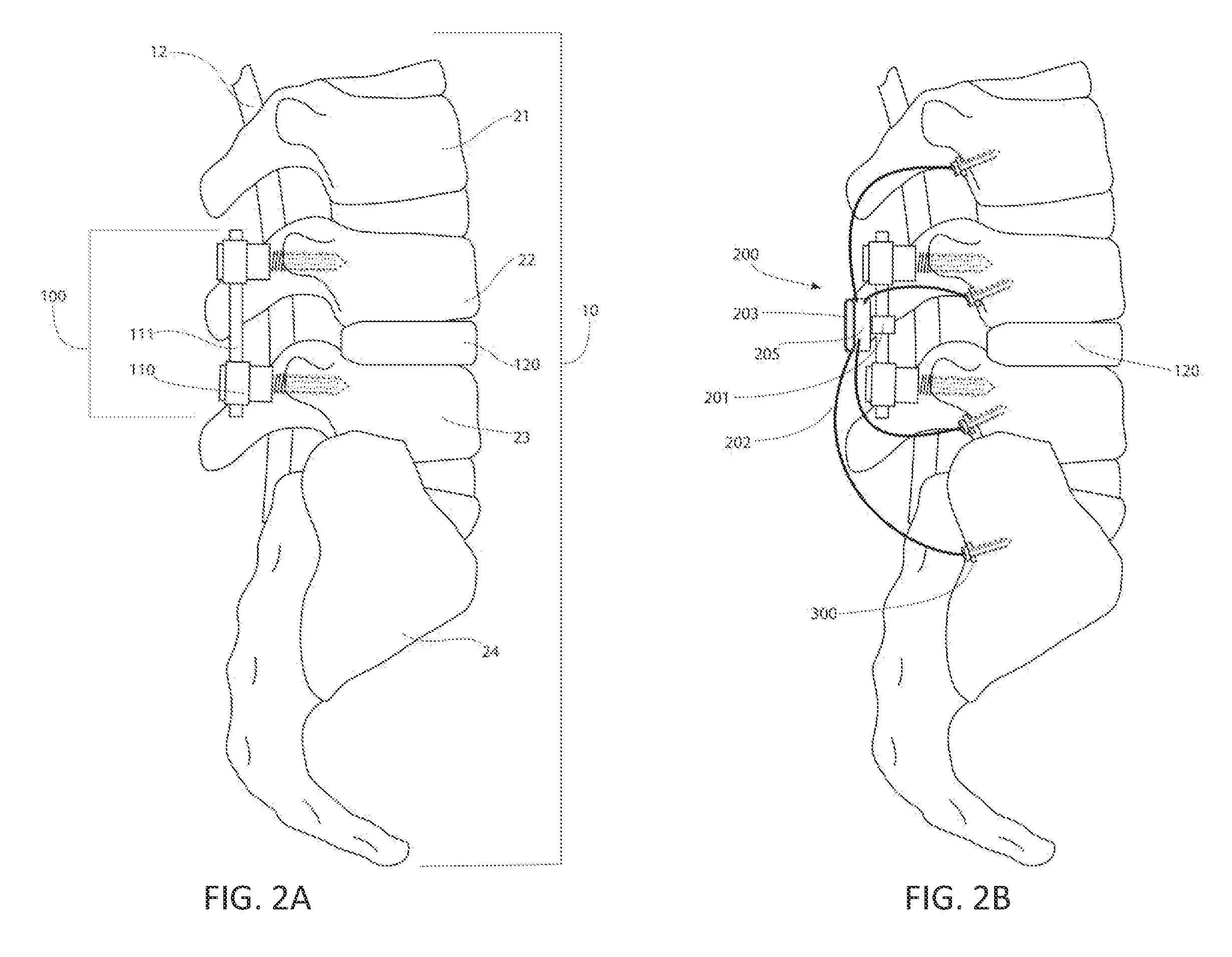Method and Apparatus for an Implantable Inertial-Based Sensing System for Real-Time, In Vivo Detection of Spinal Pseudarthrosis and Adjacent Segment Motion
a biosensor and inertial technology, applied in the field of implantable biosensor systems, can solve the problems of patient pseudarthrosis, screw loosening, weakening of implanted instruments, etc., and achieve the effect of increasing the range of motion in terms of tilt angle between adjacent segments and fused vertebrae, and reducing the risk of adjacent segment diseas
- Summary
- Abstract
- Description
- Claims
- Application Information
AI Technical Summary
Benefits of technology
Problems solved by technology
Method used
Image
Examples
Embodiment Construction
[0095]FIG. 1 is a lateral cross sectional view of a fusion sensing system 1 in its relation to the spine 10 of a patient. In this embodiment, the fusion sensing system 1 comprises an implant electronics assembly, generally denoted by reference numeral 200, coupled to spine stabilization hardware assembly, generally denoted by reference numeral 100, for interbody fusion of L4 and L5 discs of the lumbar spine using an interbody cage 120 and external wearable system 400. The fusion sensing system 1 couples a plurality of motion sensors 300 mounted into the spine 10 as best seen in FIG. 2b. The fusion sensing system 1 is powered via induction coils by a reader 401 coupled to the wearable system 400 that is worn externally by the patient. The reader 401 also comprises means for communicating to the implant electronics assembly 200 via the inductive coupling or link between the induction coils 441, 541 in FIGS. 11 and 12.
[0096]FIG. 2a is a lateral lumbar view of the spinal column 10 of a ...
PUM
 Login to View More
Login to View More Abstract
Description
Claims
Application Information
 Login to View More
Login to View More - R&D
- Intellectual Property
- Life Sciences
- Materials
- Tech Scout
- Unparalleled Data Quality
- Higher Quality Content
- 60% Fewer Hallucinations
Browse by: Latest US Patents, China's latest patents, Technical Efficacy Thesaurus, Application Domain, Technology Topic, Popular Technical Reports.
© 2025 PatSnap. All rights reserved.Legal|Privacy policy|Modern Slavery Act Transparency Statement|Sitemap|About US| Contact US: help@patsnap.com



